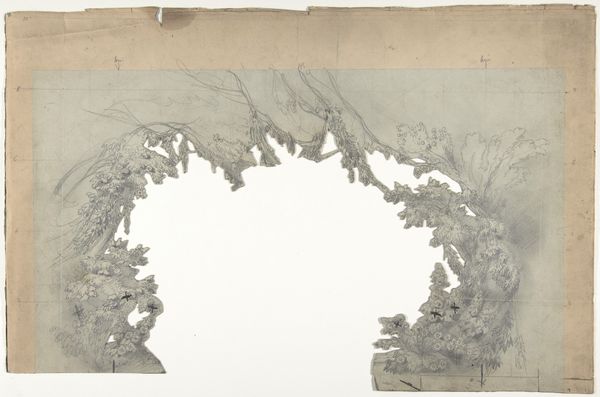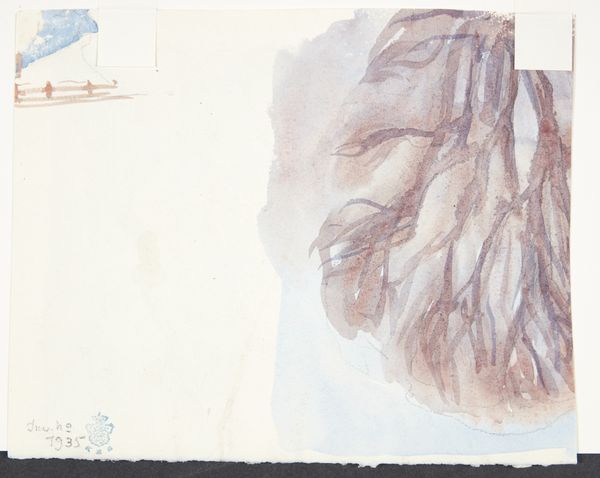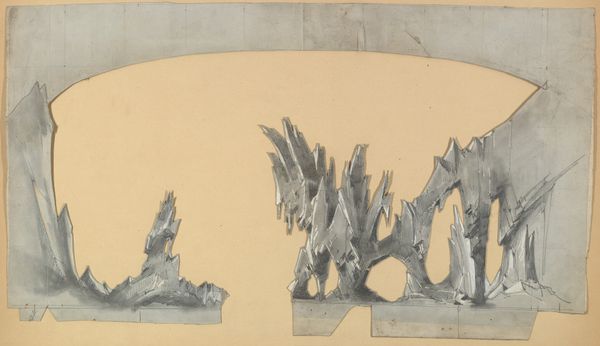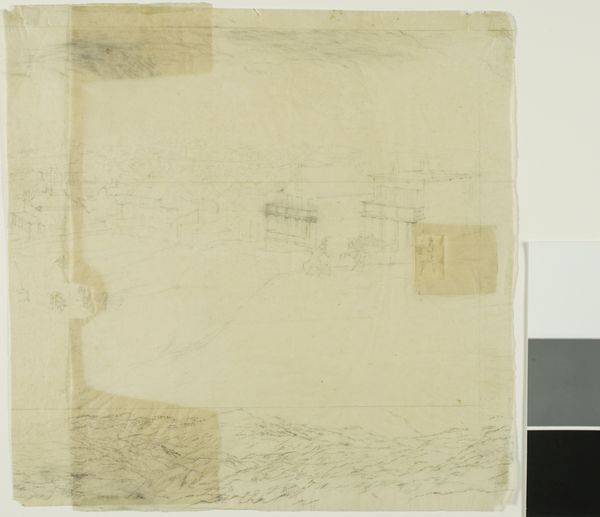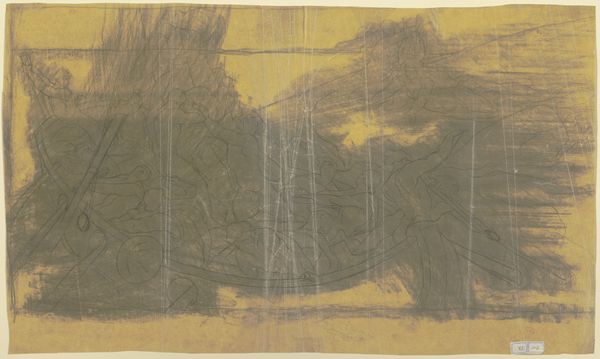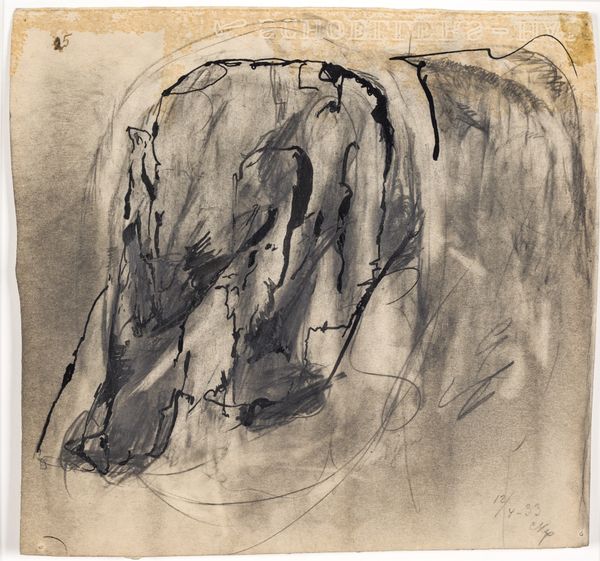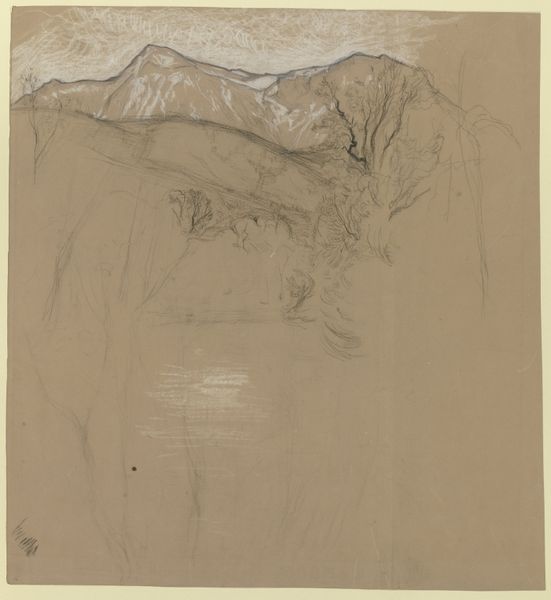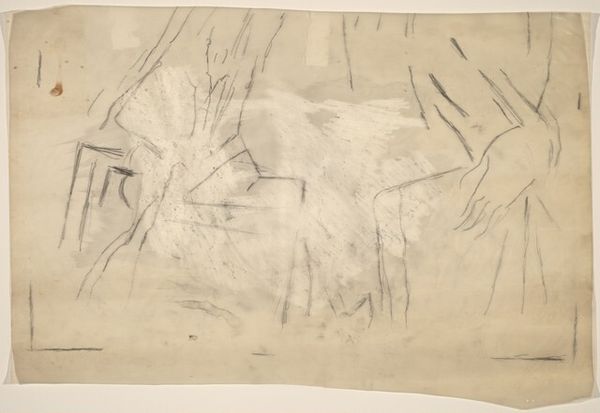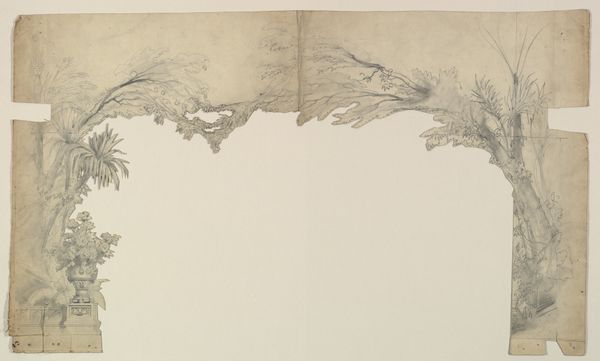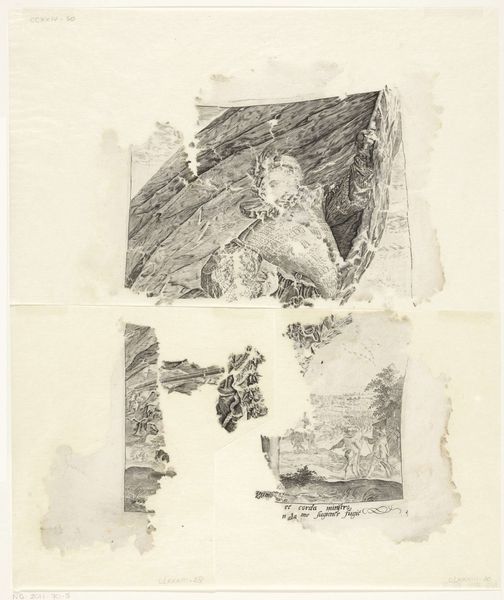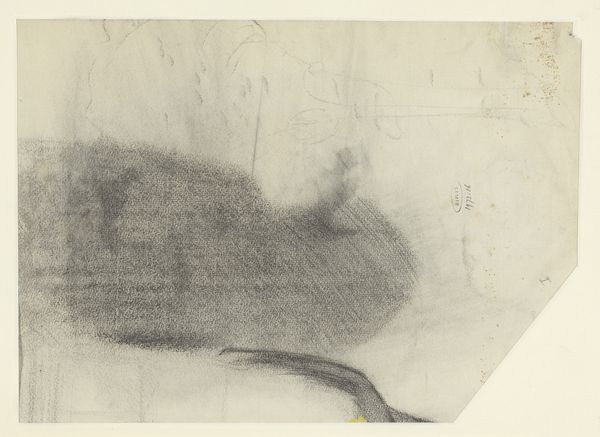
Copyright: Public Domain
This stage set design was made by Eugène Cicéri in 19th-century France, likely using watercolor and ink on paper. The design shows craggy rocks and cavernous openings, giving us an idea of the dramatic scenery that backdropped theatrical productions of the time. The artist's hand is evident in the quick, expressive brushstrokes used to depict the rock formations. It’s a process that captures the rough texture and imposing scale of the natural world. In the 1800s, stage design was crucial to creating immersive experiences for audiences. Cicéri’s design demonstrates the skill required to evoke atmosphere and transport viewers to another world. The amount of work is evident. The design may seem spontaneous, but it required careful planning and technical expertise. By valuing these ‘behind-the-scenes’ creations, we recognize the labor, skill, and creative ingenuity involved in crafting these experiences, and challenge the notion that art is solely confined to traditional paintings or sculptures.
Comments
No comments
Be the first to comment and join the conversation on the ultimate creative platform.

